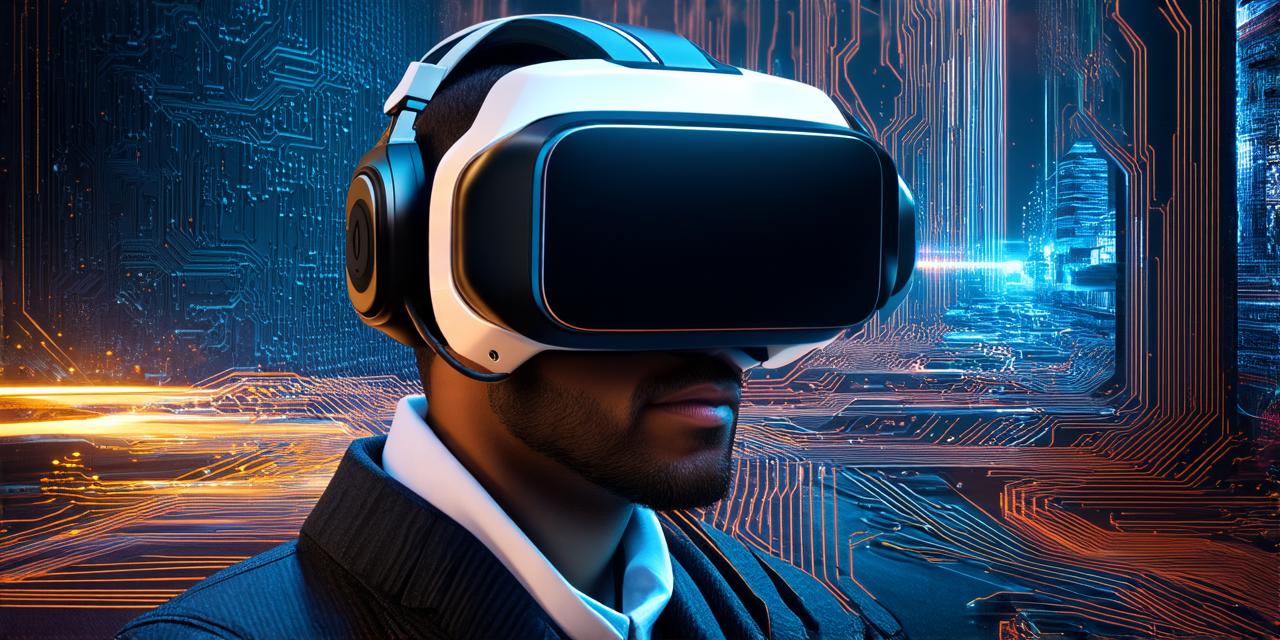Introduction:
Virtual reality (VR) is a rapidly growing technology that allows users to immerse themselves in a digital world. With the increasing popularity of VR, there has been a surge in demand for virtual reality apps. If you are looking to develop a VR app, this tutorial will guide you through the process step-by-step. We will cover everything from the basics of VR development to advanced techniques and best practices.
Part 1: The Basics of Virtual Reality Development
Before we dive into the technical aspects of developing a VR app, let’s first understand what virtual reality is and why it’s important.
Virtual Reality Definition:
Virtual reality is a technology that simulates an environment in 3D space using computer-generated images, sounds, and other sensory inputs to create an immersive experience for the user. VR headsets track the movement of the user’s head and adjust the image accordingly, creating the illusion of being inside a virtual world.
Why Virtual Reality is Important:
Virtual reality has numerous applications across various industries, including gaming, education, healthcare, and entertainment. It offers a unique and engaging way for users to interact with digital content in a more realistic manner. The immersive nature of VR can enhance learning experiences, improve patient outcomes, and provide new opportunities for creativity and exploration.
Choosing the Right Platform:
There are several platforms available for developing VR apps, including Unity, Unreal Engine, and A-Frame. Each platform has its own strengths and weaknesses, so it’s important to choose the one that best suits your needs.
Part 2: Designing Your VR App
Once you have chosen your platform, it’s time to start designing your VR app. The following are some key design considerations to keep in mind when developing a VR app.
User Experience:
The user experience (UX) is crucial for the success of any VR app. In VR, users can become disoriented and nauseous if the app is not designed well. To avoid this, it’s important to create a clear and intuitive interface that allows users to easily navigate through the app. You should also consider using motion sickness prevention techniques such as slow movement and smooth transitions.
Environmental Design:
The environmental design of your VR app plays a significant role in creating an immersive experience for the user. The environment should be designed to match the theme of the app and provide visual interest. You can use 3D models, textures, and lighting to create a realistic and engaging environment.
Interactivity:
Interactivity is key to keeping users engaged with your VR app. You can include interactive elements such as buttons, sliders, and menus to allow users to control the app’s behavior. You can also use gestures such as hand tracking to make the app more intuitive and immersive.
Part 3: Developing Your VR App
Now that you have designed your VR app, it’s time to start developing it. The following are some key development considerations to keep in mind when developing a VR app.
Technical Requirements:
Before you start developing your VR app, it’s important to ensure that your computer meets the technical requirements for the platform you are using. For example, if you are using Unity, you will need a computer with at least 4GB of RAM and a dedicated graphics card.
Code Optimization:
Code optimization is crucial for the performance of your VR app. You should use best practices such as minimizing draw calls, reducing texture memory usage, and avoiding excessive CPU and GPU usage to ensure that your app runs smoothly.
Testing:
Testing is an essential part of the development process. You should test your VR app on multiple devices and platforms to ensure that it works as expected. You can also use tools such as Unity’s built-in profiler to identify performance issues and optimize your code.
Part 4: Best Practices for VR App Development
To ensure that your VR app is successful, it’s important to follow best practices for VR app development. The following are some key best practices to keep in mind when developing a VR app.
